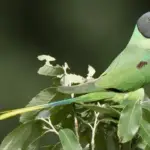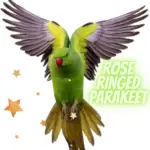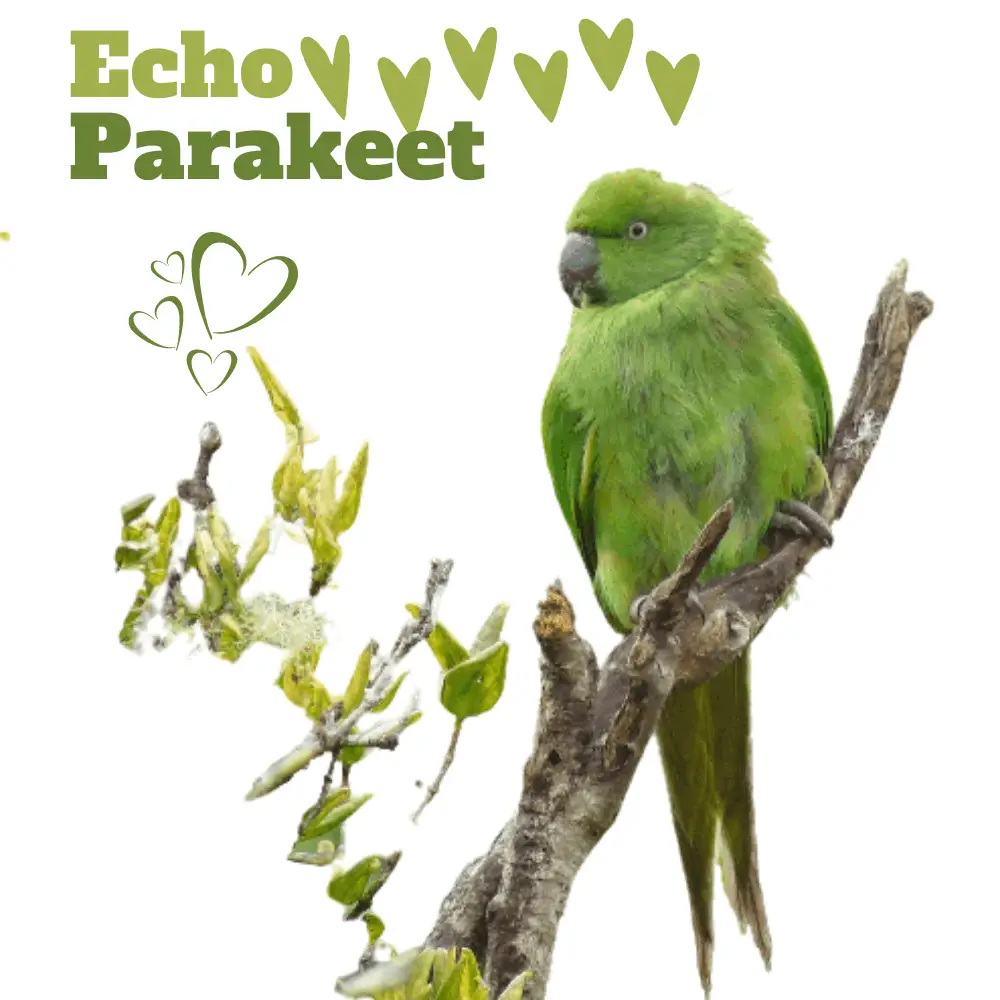
Echo Parakeet 36–42 cm; 167–193 g. Very similar to P. krameri but darker, richer green, with bluish wash on nape, tail greener above, shorter. Female like female krameri but darker, more emerald green, and bill Echo parakeet female all black. Immature like a female.
Systematics History
Editor’s Note: This article requires further editing work to merge existing content into the appropriate Subspecies sections. Please bear with us while this update takes place.
Has been treated as a race of P. krameri. Population of Mauritius originally described as P. echo, but this name now regarded as a junior synonym of eques from Reunion (where now extinct), birds being indistinguishable from descriptions of latter, of which no specimens survive. Monotypic.
Subspecies
Psittacula eques eques Scientific name definitions
Distribution
Psittacula eques echo Scientific name definitions
Distribution
Distribution
Mauritius, now restricted to SW (Black River Gorges area).
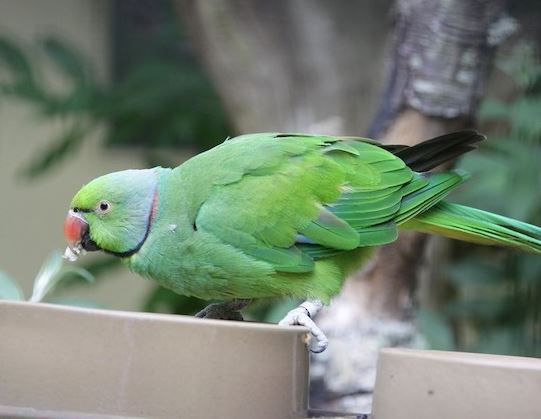
Habitat
Native lowland and upland forest and scrublands, formerly in lightly wooded, i.e. heavily degraded country; now favours areas with the largest remaining native trees such as Canarium mauritianum, Syzygium contractum, Mimusops maxima, and Labourdonnaisia.
Movement
Sedentary; birds may formerly have shifted areas quite extensively with seasonal changes in foods, in particular when cyclones stripped fruit from trees.
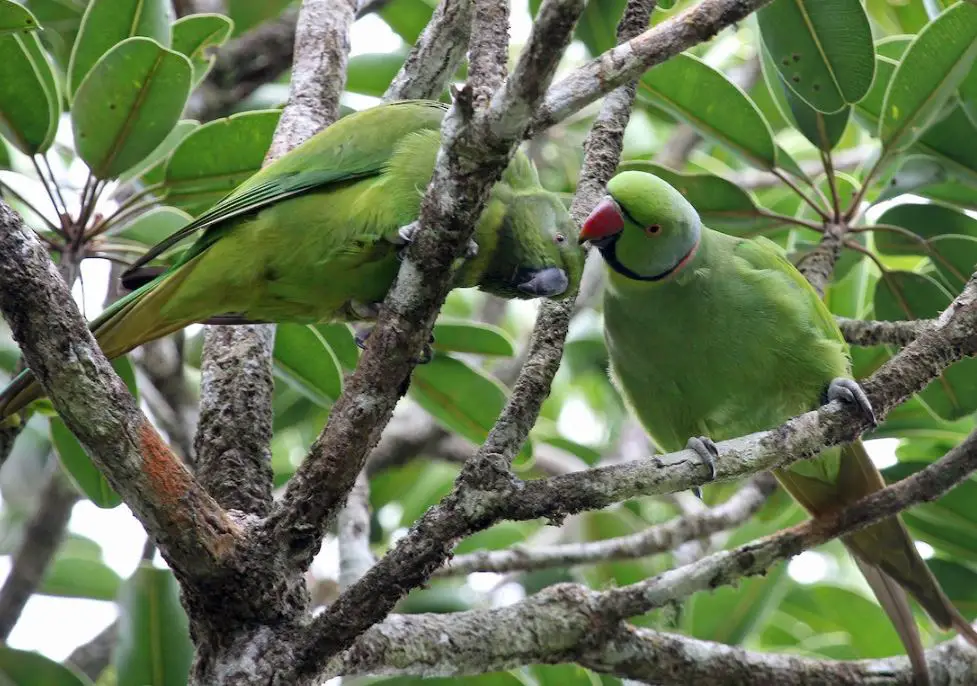
Diet and Foraging
Echo Parakeet eat Fruit of native plants such as Calophyllum, Tabernaemontana, Labourdonnaisia, Mimusops, Syzygium, Sideroxylon, Nuxia, Diospyros, Eugenia, and Erythrospermum, plus some introduced species. More leaves consumed in winter when fruit scarcer.
Sounds and Vocal Behavior
The commonest vocalization a short nasal squawk “kaah”, uttered singly or in fast series. When perched also more melodious chirrups and whistles.
Breeding
Sept–Feb. Nest in rain-sheltered hole at least 10 m up in hollow limb of old, usually living tree, notably Mimusops but also Calophyllum, Canarium and Sideroxylon.
Echo Parakeet Eggs 2–4, normally with 2 young being raised; incubation probably c. 22 days; nestling period around 9 weeks.
Echo Parakeet Conservation
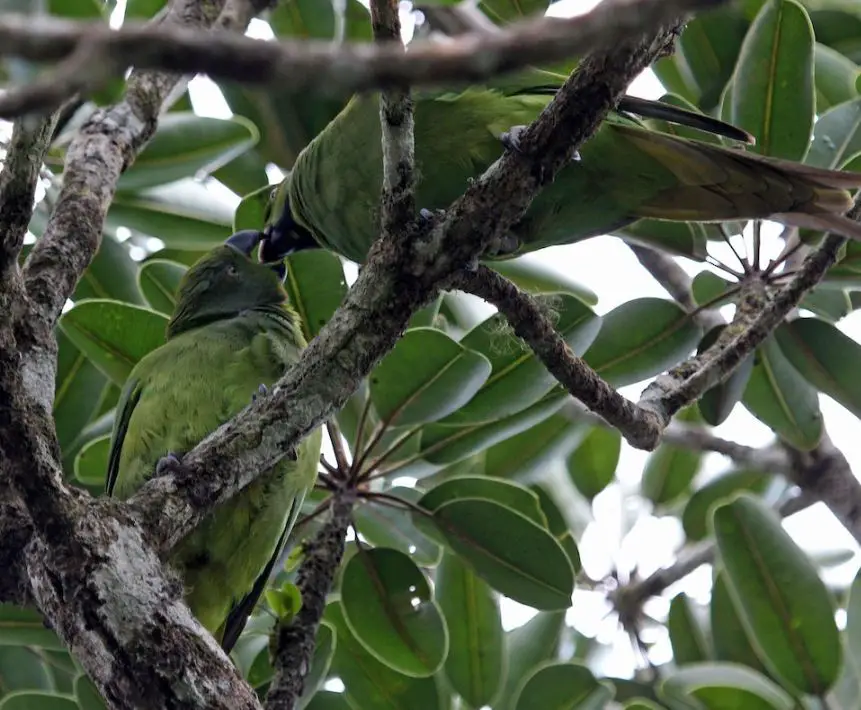
ENDANGERED. CITES I. Previously considered Critically Endangered. A BirdLife “restricted-range” species. Almost total clearance of forest on Mauritius has confined the remaining population to a small area of native vegetation in the mountainous SW,
based on Black River Gorges, now a national park. Illegal hunting, nest predation and food competition by macaques, nest-site competition from introduced P. krameri and Common Mynas (Acridotheres tristis), and the impact of cyclones on food supplies and nest-sites were all implicated in the extinction vortex
the Echo Parakeet appeared to have entered in the 1970s and 1980s, during which time there was an almost total breeding failure and the population was believed to be around 10 individuals.
Some breeding success since then has resulted in numbers rising to 16–22 in 1993–1994, with a pair in captivity also producing offspring; by 1996 there were 13 breeding groups (pairs and helpers) in the wild, i.e.
40–50 birds in total, and first clutches were being taken for captive rearing and subsequent release, in order to maximize current reproductive output.
Since 1995, the intensive management of the wild population (including supplementary feeding, clutch manipulation, management of nest cavities, and rodent control), the discovery of previously unknown breeding groups,
and an increase in the proportion of breeding groups that attempt to breed each year, lead to rapid population growth. Notwithstanding the impact of the Psittacine Beak and Feather Disease (PBFD), there were over 500 birds in the wild in 2010.

